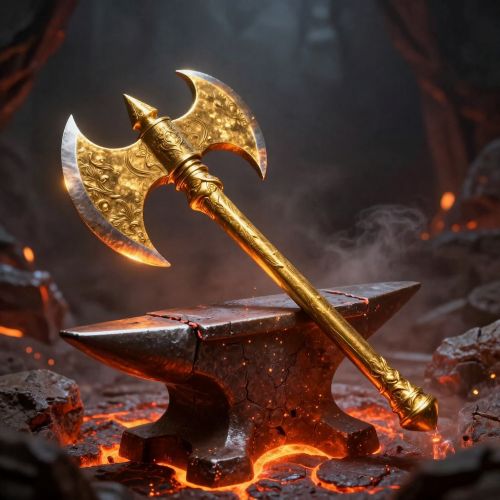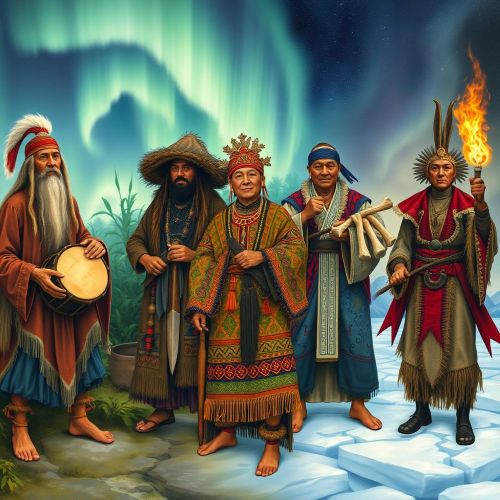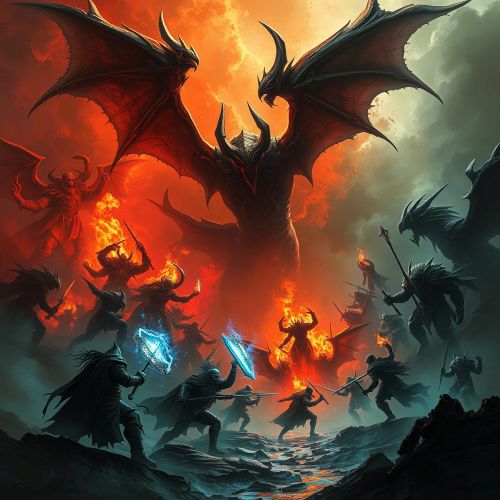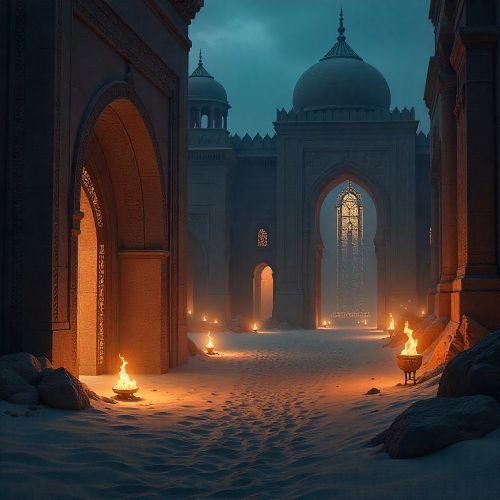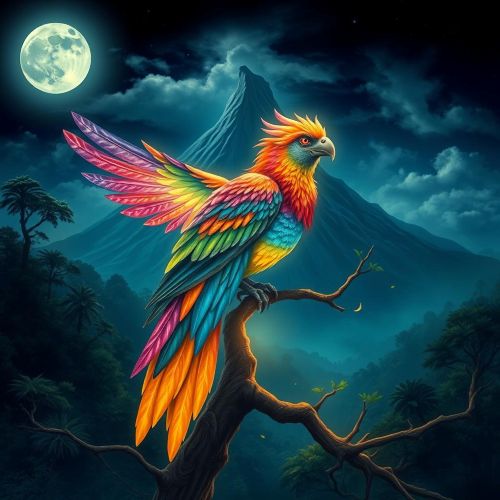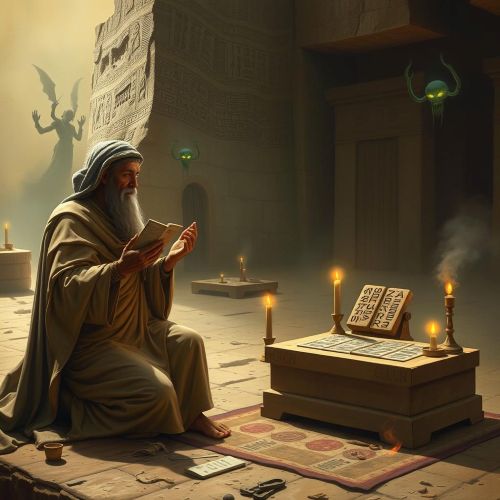
When Demons Heal: The Forgotten Story of the Udug
In the vast world of Mesopotamian mythology, few beings are as fascinating and enigmatic as the udug. These supernatural figures, often depicted as spirits or demons, played an essential role in the religious and cultural beliefs of ancient Sumer, Akkad, Babylonia, and Assyria. While the word “demon” may instantly spark an image of purely malevolent entities, the udug were far more complex. They were not simply agents of destruction or evil; instead, they embodied the duality of life, existing as both benevolent protectors and harmful spirits.
The udug were deeply woven into Mesopotamian spiritual practices, rituals, and healing traditions, making them central to the way ancient people understood sickness, misfortune, and divine protection. To truly grasp the nature of the udug is to understand how ancient Mesopotamians perceived the delicate balance between the natural and supernatural worlds.
Origins of the Udug
The term udug comes from the Sumerian word udug (later translated into Akkadian as utukku), and it broadly meant “spirit.” Unlike other mythological beings who had fixed roles or appearances, the udug were shapeless, unseen forces that could take on different forms depending on the situation. They were not confined to the underworld but existed everywhere—on earth, in the sky, and within the human body.
One of the earliest references to the udug can be found in Sumerian incantations and ritual texts dating back to the third millennium BCE. These writings often described them as invisible presences that could bring disease, fever, and bad luck—or act as guardians against such afflictions. Their ambiguity set them apart from other mythological figures, making them both feared and respected.
Benevolent and Malevolent Udug
The most intriguing feature of the udug is their dual nature. Unlike demons in later religious traditions that were typically seen as evil, the udug could be either good (udug hul – “evil spirit”) or protective (udug saĝ – “good spirit”).
-
Malevolent Udug: These spirits were often blamed for illnesses, nightmares, and calamities. Ancient Mesopotamians believed that when someone fell ill, an evil udug may have entered the body, disrupting the natural balance. Priests and healers used incantations, offerings, and amulets to expel these harmful spirits.
-
Benevolent Udug: In contrast, the protective udug acted as guardians, shielding people from misfortune. Ritual texts invoked them to drive out their harmful counterparts. In this sense, the good udug served a role similar to guardian angels, ensuring safety and restoring health.
This duality reflects how the Mesopotamians understood the universe—not as a battle of pure good versus evil, but as a balance of forces, where spirits could shift in alignment depending on circumstances.
Role in Healing and Rituals
The udug featured prominently in Mesopotamian medicine and magic. Illnesses were rarely seen as purely physical; instead, they were believed to be spiritual afflictions. The evil udug might cause fever, paralysis, or madness, while the protective udug could be summoned to heal.
Priests known as āšipu (exorcists) performed elaborate rituals to deal with the udug. These involved chanting incantations, burning incense, and crafting figurines that symbolized the spirit to be banished. The most famous collection of such texts is the Udug-hul incantations, which specifically addressed evil spirits and provided detailed instructions on how to counter them.
Through these practices, the udug became central to Mesopotamian spiritual life, bridging the gap between religion, medicine, and daily existence.
Udug in Mythological Texts
Unlike gods such as Enki, Ishtar, or Marduk, the udug did not have complex myths or genealogies. Instead, they were primarily functional spirits mentioned in hymns, incantations, and ritual instructions. Their presence highlighted the constant interaction between humans and the unseen world.
However, texts sometimes described them as terrifying in form—“mouths that roar like lions,” “faces twisted with anger,” or “bodies cloaked in shadow.” These depictions emphasized their unpredictable and awe-inspiring nature. Yet, since they were also invisible, much of their essence remained mysterious, leaving people to imagine their appearance.
Symbolism of the Udug
The udug represented more than just spirits; they symbolized the uncertainty of life. Ancient Mesopotamians lived in a harsh environment where floods, droughts, famine, and disease were ever-present threats. The idea of the udug gave shape to these unseen dangers, making them tangible enough to be addressed through ritual and prayer.
At the same time, the benevolent udug reflected hope—that unseen powers could also bring protection and healing. In this way, the udug captured the Mesopotamian worldview of balance, duality, and respect for the unseen.
Legacy of the Udug
Today, the udug remain one of the most fascinating aspects of Mesopotamian mythology. They remind us that ancient people had a nuanced understanding of the supernatural, one that acknowledged both the destructive and protective aspects of the spirit world.
Modern scholars and enthusiasts often compare the udug to later concepts of demons and guardian spirits found in Judeo-Christian, Islamic, and other traditions. While their roles differ, the idea that unseen forces shape human life is a shared cultural theme across civilizations.
As archaeology continues to uncover more tablets and texts, the udug continue to intrigue historians, linguists, and mythologists, offering a deeper glimpse into how ancient Mesopotamians interpreted their world.
Conclusion
The udug were not simple figures of good or evil but rather complex spirits embodying both sides of existence. They brought illness and despair but could also protect and heal. They stood as symbols of life’s unpredictability, bridging the gap between fear and faith.
By exploring who the udug were, we gain more than just an understanding of Mesopotamian mythology—we gain insight into how one of the world’s earliest civilizations grappled with the mysteries of life, death, and the unseen forces that lie beyond human control.
No posts were found.




